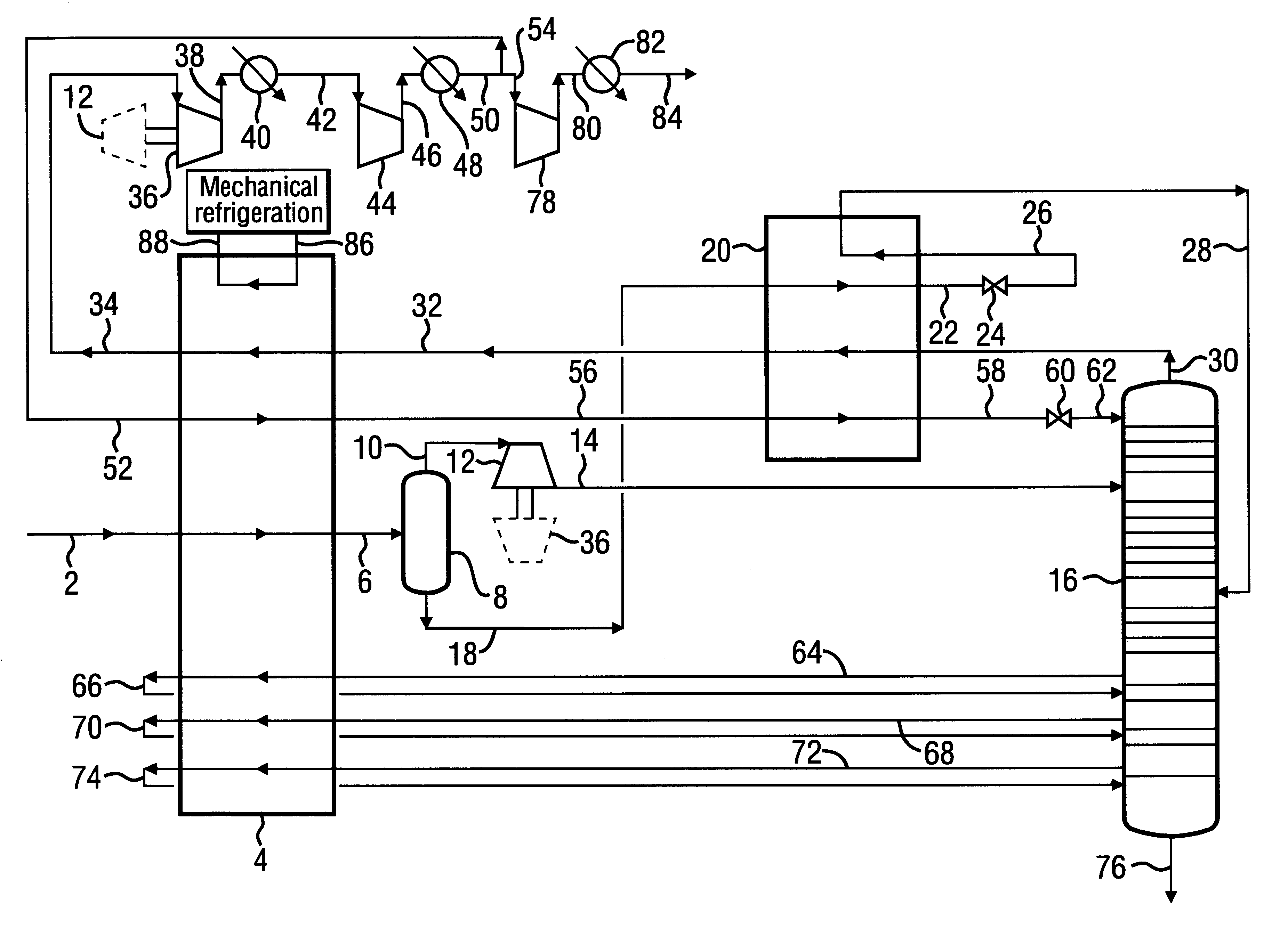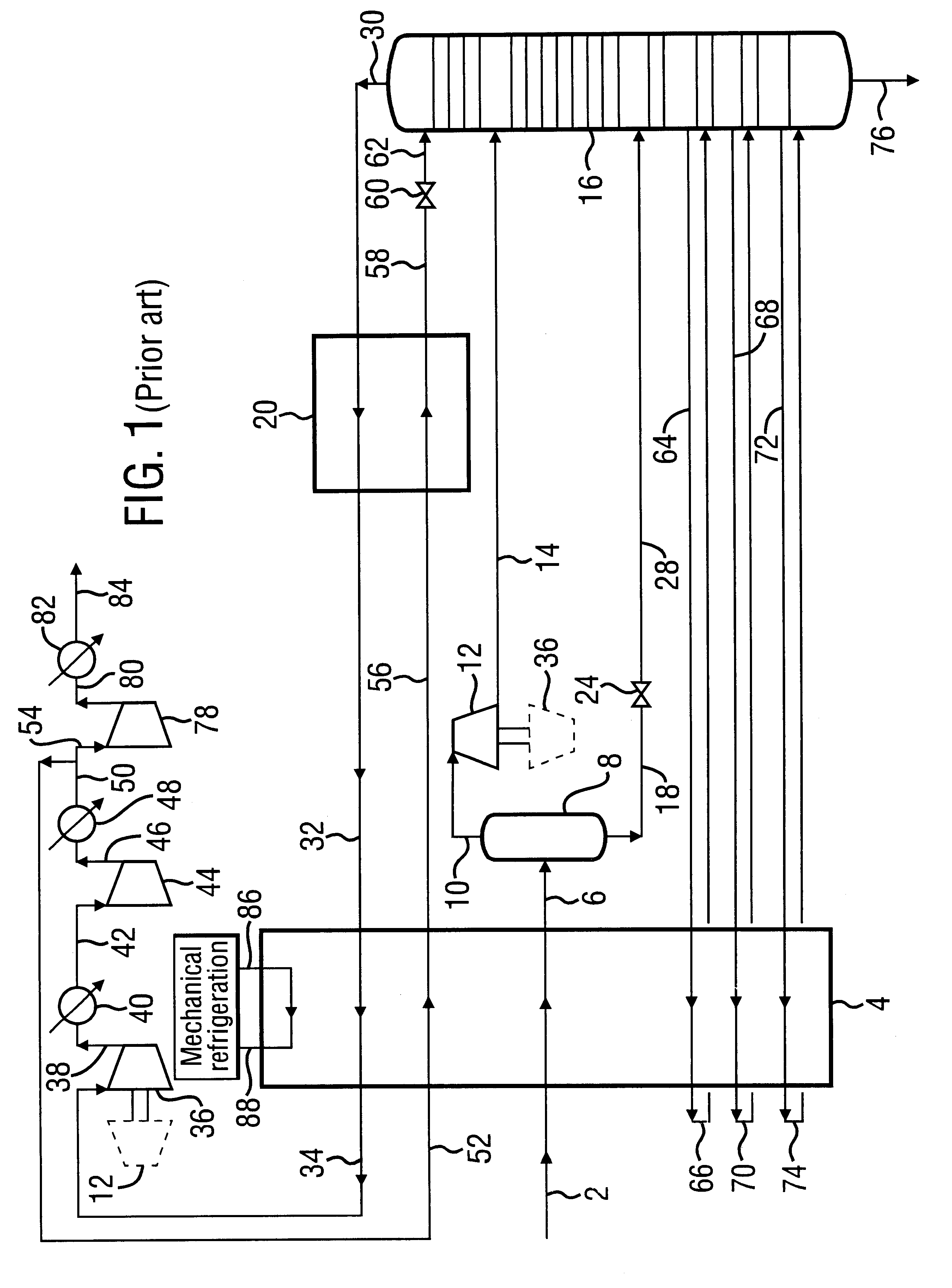Hydrocarbon separation process and apparatus
a technology of hydrocarbon separation and process, applied in the field of hydrocarbon separation process and apparatus, can solve the problems of uneconomically high power requirements, inability to use conventional overhead condensers, and inability to provide very high recovery of ethane, and achieve the effect of reducing overhead temperature and increasing recovery
- Summary
- Abstract
- Description
- Claims
- Application Information
AI Technical Summary
Benefits of technology
Problems solved by technology
Method used
Image
Examples
embodiment 1
The invention is described below in terms of a process for high ethane recovery. The description should be read in conjunction with the flow diagram in FIG. 2.
A feed gas at an elevated pressure 2 is passed through heat exchange system 4 where it is cooled and partially condensed. The liquid phase 18 is separated from the uncondensed vapour phase 10 in vapour / liquid separator 8. A first gaseous stream comprising vapour 10 is work expanded in turbo-expander 12 to give a two phase stream 14 which is fed to the upper portion of a fractionation column in the form of demethaniser 16. A first liquid stream comprising liquid 18 is cooled in heat exchange system 20 to give sub-cooled liquid 22 which is expanded across valve 24 to give a stream 26 which may be liquid or two phase. Stream 26 is partially evaporated in heat exchange system 20 to give a two phase stream 28 which is fed to a mid-stage of the demethaniser 16.
Refrigeration for feed gas cooling is supplemented by evaporating liquid ...
embodiment 2
The second embodiment of the invention is described below in terms of a process for high ethane recovery. The description should be read in conjunction with the flow diagram in FIG. 5.
A feed gas at an elevated pressure 2 is passed through heat exchange system 4 where it is cooled and partially condensed to give a two phase stream 6. The liquid phase 48 is separated from the uncondensed vapour phase 10 in vapour / liquid separator 8. The first gaseous stream comprising vapour 10 is work expanded in turbo-expander 12 to give a two phase stream 14 which is fed to a mid point of a reequilibration device in the form of high pressure wash column 16. A first liquid stream comprising liquid 48 is expanded to a medium pressure across valve 50 to give a two phase stream 52 which is fed to the bottom of the high pressure wash column 16.
Refrigeration for feed gas cooling is supplemented by evaporating liquid refrigerant stream 108 in heat exchange system 4 giving refrigerant vapour stream 110. Us...
PUM
| Property | Measurement | Unit |
|---|---|---|
| liquid | aaaaa | aaaaa |
| heat | aaaaa | aaaaa |
| pressure | aaaaa | aaaaa |
Abstract
Description
Claims
Application Information
 Login to View More
Login to View More - R&D
- Intellectual Property
- Life Sciences
- Materials
- Tech Scout
- Unparalleled Data Quality
- Higher Quality Content
- 60% Fewer Hallucinations
Browse by: Latest US Patents, China's latest patents, Technical Efficacy Thesaurus, Application Domain, Technology Topic, Popular Technical Reports.
© 2025 PatSnap. All rights reserved.Legal|Privacy policy|Modern Slavery Act Transparency Statement|Sitemap|About US| Contact US: help@patsnap.com



